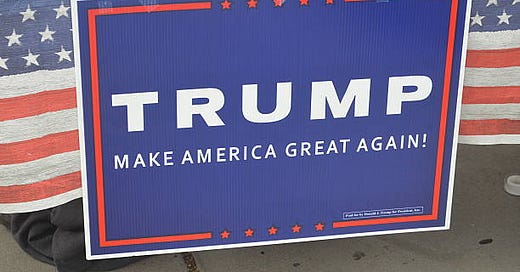The MAGA movement is based in a conservative impulse, not racism, fascism, or xenophobia.
MAGA conservatism believes in limited government. It maintains that the national economy should drive itself through the talent, creativity, hard work, and initiative of employees and entrepreneurs in the private sector. It has a bias against big corporations, and sometimes calls for their breakup, but not always, depending on the role that corporations in particular economic sectors play in the productive process. It is not against government regulation of the economy, but it wants to keep it to a minimum. Unnecessary, costly, and time-consuming regulations should be avoided.
MAGA conservatism is against Big Government and governmental programs that are designed to resolve social problems. It believes that many government programs since the New Deal have fostered dependency and have undermined individual responsibility and initiative, and they involve unnecessary costs to the taxpayer. …



